In Hindu cosmology, time is divided into four epochs, or yugas: Satya Yuga, Treta Yuga, Dvapara Yuga, and Kali Yuga. Each yuga represents a distinct era in the moral and physical evolution of humanity. Currently, we are in the Kali Yuga, which began in 3102 BCE and is characterized by a decline in righteousness and virtue.
On April 30th, 2025 , several Hindu festivals are observed, including Akshaya Tritiya, Matangi Jayanti, and Rohini Vrat. Notably, this date is also associated with the celebration of Treta Yuga, the second of the four yugas. Treta Yuga is marked by the presence of three avatars of Vishnu: Vamana, Parashurama, and Rama, and is known for the establishment of virtue and the decline of vice.
While the observance of Treta Yuga on Akshaya Tritiya is significant, it's important to note that the recognition and celebration of yuga-related festivals can vary among different Hindu communities and regions. Therefore, the specific customs and rituals associated with this observance may differ.
Significance & Importance of Treta Yuga Festival
The Treta Yuga Festival is a sacred occasion that honors the second epoch (yuga) following Satya Yuga and preceding Dvapara Yuga. This yuga holds immense significance in Hindu tradition as it witnessed the divine incarnations of Bhagwan Vishnu, who descended to restore righteousness and eliminate unrighteousness from the world.
Treta Yuga is considered a golden era of dharma, though slightly less virtuous than Satya Yuga. During this time, the first signs of moral decline began to appear. The varna system became more structured, and society saw increasing complexity in duties and responsibilities. Human life expectancy was much longer than today, lasting up to 10,000 years. Although righteousness still prevailed, materialistic desires started emerging. The principle of dharma, which stood firmly on four legs in Satya Yuga, now operated on three, signifying a gradual weakening of virtues.
The Treta Yuga Festival is primarily celebrated in honor of Bhagwan Vishnu’s avatars who appeared during this era to guide and uplift humanity. Among these, the most revered are Vamana , Parashurama , and Rama . Vamana, the divine dwarf, humbled the mighty King Bali and restored cosmic order. Parashurama, the warrior-sage, wielded his axe to eliminate corrupt rulers and reinstate dharma. Rama, the ideal king and embodiment of virtue, fought against the demon king Ravana to rescue Sita and establish the principles of righteousness. Since Treta Yuga is closely associated with Bhagwan Rama, festivals like Rama Navami, which marks his birth, hold a deep connection with this yuga.
The Treta Yuga Festival often aligns with Akshaya Tritiya, a day of great auspiciousness in Hinduism. Akshaya Tritiya marks the beginning of Treta Yuga and is believed to be a time of eternal prosperity and spiritual merit. On this day, many people purchase gold, believing it will bring long-lasting wealth and success. Devotees also worship Bhagwan Vishnu and Goddess Lakshmi, seeking their blessings for prosperity and well-being. Ritual bathing in sacred rivers like the Ganga, Yamuna, and Godavari is considered highly purifying, as it is believed to wash away sins and bestow spiritual upliftment.
Beyond rituals and observances, the Treta Yuga Festival carries deep philosophical meaning. It serves as a reminder of the importance of dharma and righteous living, as exemplified by Bhagwan Rama. His life teaches self-discipline, devotion, and the unwavering pursuit of justice. The festival also emphasizes the triumph of good over evil, as seen in Rama’s victory over Ravana. Parashurama’s life teaches the value of duty and sacrifice, reminding devotees of the need for detachment and discipline in maintaining balance in the world.
The Treta Yuga Festival is not just a remembrance of an ancient era but a spiritual opportunity for reflection and self-improvement. By participating in prayers, fasting, and acts of righteousness, devotees seek to align themselves with the virtues of Treta Yuga, aspiring to live a life of truth, justice, and devotion.
Stories of Treta Yuga Festival
The Treta Yuga Festival is deeply intertwined with the divine incarnations of Bhagwan Vishnu, who appeared in this era to restore dharma and establish righteousness. Several legendary stories from Hindu scriptures highlight the significance of Treta Yuga and the teachings it imparts to humanity.
The Story of Bhagwan Vamana and King Bali
During the Treta Yuga, the demon king Bali had gained immense power through penance and devotion, conquering all three worlds. Though he was a benevolent ruler, his growing dominance threatened the balance of dharma. Bhagwan Vishnu incarnated as Vamana, a divine dwarf, and approached Bali while he was performing a yajna (sacred ritual). Disguised as a humble Brahmin, Vamana requested three paces of land. Bali, known for his generosity, agreed without hesitation.
To the astonishment of all, Vamana expanded into a gigantic cosmic form, covering the entire earth with one step and the heavens with the second. With no space left for the third step, King Bali humbly offered his own head. Bhagwan Vamana, pleased with his devotion, granted him the kingdom of the underworld and blessed him with immortality. This story symbolizes the ultimate surrender to God and the divine justice that ensures balance in the universe.
The Story of Parashurama and the Kshatriya Kings
The Treta Yuga saw the rise of Parashurama, the warrior sage and sixth incarnation of Bhagwan Vishnu. Born to the great sage Jamadagni and his wife Renuka, Parashurama was a fierce protector of dharma. At that time, the Kshatriya rulers had become corrupt and oppressive, misusing their power to exploit the weak. One such king, Kartavirya Arjuna, a thousand-armed ruler, stole the divine cow Kamadhenu from Parashurama’s father. In retaliation, Parashurama single-handedly annihilated Kartavirya Arjuna and his army.
However, the Kshatriyas continued their tyranny, repeatedly defying dharma. In response, Parashurama vowed to cleanse the earth and, with his mighty axe, waged war against the unrighteous rulers, eliminating them twenty-one times. After fulfilling his duty, he renounced warfare and retired to penance, signifying the power of righteousness over unchecked authority. His story emphasizes the importance of justice, humility, and self-restraint.
The Story of Bhagwan Rama and the Battle Against Ravana
One of the most celebrated events of Treta Yuga is the life and reign of Bhagwan Rama, the seventh incarnation of Vishnu. Born as the Prince of Ayodhya, he was the embodiment of virtue, honor, and righteousness. His story is detailed in the epic Ramayana.
Rama was exiled to the forest for 14 years due to a boon given by his father, King Dasharatha, to his stepmother Kaikeyi. Accompanied by his wife Sita and brother Lakshmana, he faced numerous hardships, including the kidnapping of Sita by the demon king Ravana. Determined to rescue her, Rama formed an alliance with Hanuman and the Vanara (monkey) army, leading to the legendary war in Lanka.
After an intense battle, Rama defeated Ravana, restoring peace and dharma to the world. His return to Ayodhya is celebrated as Diwali, symbolizing the triumph of good over evil. The story of Rama teaches duty, devotion, loyalty, and the importance of upholding one’s promises.
The Story of King Harishchandra – The Epitome of Truth
Another remarkable figure of Treta Yuga was King Harishchandra, known for his unwavering commitment to truth and integrity. He was tested by the sage Vishwamitra, who challenged him to uphold his word at all costs.
Harishchandra was forced to give up his kingdom, wealth, and even his wife and son. Reduced to extreme poverty, he worked as a crematorium guard while his wife labored to support their son. When tragedy struck and their son died, Harishchandra was put to his ultimate test—demanding a cremation fee from his grieving wife.
Despite his suffering, he never abandoned the path of truth. Pleased with his unwavering honesty, the gods restored his kingdom, revived his son, and granted him divine blessings. His story serves as an eternal reminder that truth and righteousness will always prevail, even in the face of hardship.
The stories from Treta Yuga reflect the divine interventions of Bhagwan Vishnu and the timeless lessons of dharma, devotion, justice, and truth. They remind humanity that righteousness must be upheld, even amidst adversity. The Treta Yuga Festival is not just a celebration of the past but an opportunity to reflect on these teachings and integrate them into modern life.
Festival Date, Time, Muhurat & Tithi
In 2025, the observance of Treta Yuga is scheduled as follows:
Treta Yuga Observance: Wednesday, April 30th, 2025.
This date corresponds to the Tritiya Tithi (3rd lunar day) of the Vaishakha month, according to the Hindu lunar calendar.
Note: Sunrise and sunset vary by region and date due to India's geographical diversity. For exact timings, please refer to local astronomical data.
How to celebrate Treta Yuga Festival
On the day of the Treta Yuga Festival, devotees immerse themselves in a variety of sacred religious practices to invoke divine blessings and reaffirm their commitment to dharma. This festival is not merely a ceremonial observance but a deeply spiritual occasion that allows individuals to connect with the divine energies of Bhagwan Vishnu and his avatars, particularly Bhagwan Rama, who epitomized righteousness, duty, and self-sacrifice.
A central aspect of the celebrations involves visiting temples dedicated to Bhagwan Vishnu, with special significance given to those associated with Bhagwan Rama . These temples are adorned with flowers, lamps, and sacred symbols, creating an atmosphere of devotion and reverence. Many devotees undertake pilgrimages to holy sites such as Ayodhya, Rameswaram, and Bhadrachalam, which are closely linked to the Ramayana and the events of Treta Yuga.
Reciting sacred scriptures is a highly auspicious activity on this day, as these texts provide spiritual wisdom and narrate the divine pastimes of Bhagwan Vishnu’s incarnations. The Ramayana, which chronicles the life, exile, and victory of Bhagwan Rama, is widely read, either individually or in satsangs (group recitations).
Devotees also study the Vishnu Purana, which details the cosmic functions of Bhagwan Vishnu, and the Bhagavata Purana, which glorifies his various avatars and their divine missions. Chanting Vishnu Sahasranama (the thousand names of Bhagwan Vishnu) and Rama Nama (the holy name of Bhagwan Rama) is also believed to bring immense spiritual merit and liberation from sins.
Fasting is an essential part of the observance, as it serves as a means of self-discipline, purification, and devotion. Many devotees observe a full-day fast (nirjala vrata), abstaining from food and water, while others partake in a phalahara (fruit-based) or sattvic (pure vegetarian) meal at the end of the day. Fasting is undertaken with the intention of purifying the mind and body, fostering detachment from worldly desires, and focusing on spiritual upliftment.
Acts of charity (daan) are considered highly meritorious during the Treta Yuga Festival. Following the example of Bhagwan Rama’s generosity and righteousness, devotees donate food, clothes, grains, and other essential commodities to the underprivileged. It is believed that offering alms to Brahmins, saints, and the needy on this sacred day bestows divine blessings and accumulates punya (spiritual merit). Many also feed cows, as they are revered as sacred beings in Hinduism.
One of the most significant rituals performed on this occasion is the conducting of yajnas and homas (fire sacrifices). The fire represents Agni, the divine messenger, who carries prayers to the celestial realms. These Vedic rituals are performed to invoke the blessings of Bhagwan Vishnu, Lakshmi, and other deities, ensuring prosperity, peace, and spiritual purification. Offerings of ghee, grains, and sacred herbs are poured into the fire while Vedic mantras, such as the Purusha Sukta and Narayana Kavacha, are chanted by priests. The smoke from the yajnas is believed to have purifying effects on both the physical environment and the spiritual consciousness of those present.
Apart from temple rituals, devotees also organize bhajans and kirtans, where they sing devotional songs in praise of Bhagwan Vishnu and Bhagwan Rama. These musical gatherings create an atmosphere of divine bliss and spiritual elevation, helping devotees experience bhakti (devotion) in its purest form.
In households, special pujas and abhishekams (ritual bathing of deities) are conducted for Vishnu and Rama idols, using sacred substances like milk, honey, ghee, curd, and holy water from the Ganga or Yamuna rivers. After the rituals, prasad (sanctified food offerings) is distributed among family members and guests, reinforcing the spirit of divine grace and communal harmony.
For those seeking deeper spiritual discipline, engaging in meditation, contemplation, and scriptural discussions is encouraged on this day. Some devotees undertake Mouna Vrata (vow of silence) as a means of focusing their minds on divine consciousness and avoiding unnecessary distractions.
Overall, the Treta Yuga Festival is not just a historical commemoration but a spiritually enriching occasion that allows devotees to align their lives with truth, righteousness, devotion, and selfless service.
By participating in these sacred activities, one aspires to embody the virtues upheld by Bhagwan Rama and the great sages of Treta Yuga, paving the way for inner transformation and divine grace.
Treta Yuga Festival Puja Vidhi (Puja Procedure)
The Treta Yuga Festival Puja Vidhi follows a traditional Hindu puja procedure dedicated to Bhagwan Vishnu and his avatars, especially Bhagwan Rama. The puja is performed with devotion, sincerity, and a pure heart to seek divine blessings.
On the day of the festival, devotees wake up early, take a holy bath, and wear clean or traditional attire. Many prefer to wear yellow or white, as these colors are associated with Bhagwan Vishnu. The puja area is cleaned, and an altar is set up with an idol or picture of Bhagwan Vishnu, Bhagwan Rama, and Goddess Lakshmi. Some devotees also place an image of Hanuman, as he is a great devotee of Bhagwan Rama. A lamp (diya) is lit, and incense sticks are offered to purify the surroundings.
The puja begins with the Sankalpa (a vow or resolution), where the devotee mentally states their intention to perform the puja with devotion and sincerity. This is followed by Achamana , a ritual where a small amount of water is sipped three times while chanting Vishnu mantras for purification. Then, Ganesha Puja is performed to invoke Bhagwan Ganesha’s blessings for the successful completion of the puja.
After invoking divine blessings, Abhishekam (ritual bathing of the deity) is done by offering sacred substances like milk, honey, curd, ghee, sugar, and holy water to the deity. Each ingredient represents purity and devotion. After the Abhishekam, the idol or picture is gently wiped clean and adorned with sandalwood paste, turmeric, kumkum, and flowers. A fresh garland is placed around the deity.
The main part of the puja involves chanting the Vishnu Sahasranama (1000 names of Vishnu) or reciting Rama Stotra, Vishnu Purana verses, or select chapters from the Ramayana. Devotees also chant 'Om Namo Bhagavate Vasudevaya' or 'Shri Ram Jai Ram Jai Jai Ram' multiple times to invoke divine energy.
Offerings of Naivedya (food items such as fruits, sweets, and cooked sattvic food like kheer or puri) are made to the deity. Tulsi leaves, which are sacred to Bhagwan Vishnu, are placed on the offerings before presenting them.
After the Naivedya, devotees perform the Aarti using a lit camphor lamp while singing Vishnu Aarti or Rama Aarti, moving the lamp in circular motions before the deity.
Following the Aarti, devotees bow down and seek blessings by placing their hands near the flame and touching their forehead. The prasad (sanctified food) is then distributed among family members and guests. Some devotees observe fasting, which may be a complete fast or a partial fast with fruits and milk. Others engage in charity by donating food, clothes, and essentials to the needy.
The puja concludes with silent meditation, where devotees reflect on Bhagwan Vishnu’s teachings and pray for peace, prosperity, and spiritual growth. Many also participate in bhajans and kirtans, singing praises of Bhagwan Rama and Bhagwan Vishnu, filling the atmosphere with divine vibrations.
Treta Yuga Festival Vrat Vidhi (Fasting Procedure)
Fasting (Vrat) on the Treta Yuga Festival is observed with great devotion to seek the divine blessings of Bhagwan Vishnu and Bhagwan Rama. It is believed that observing this fast with sincerity helps one attain spiritual purification, peace, prosperity, and liberation from past sins. The fasting procedure follows a structured and disciplined approach, beginning from the previous night and continuing until the completion of the puja and prasad distribution.
1. Sankalpa (Taking a Vow for the Fast)
On the evening before the Treta Yuga Festival, devotees take a Sankalpa (sacred resolution) for the successful completion of the fast. They mentally or verbally state their intention to observe the Vrat (fast) with dedication and devotion. The sankalpa is made in front of an idol or image of Bhagwan Vishnu or Bhagwan Rama, and some also light a ghee lamp (diya) while chanting Vishnu or Rama mantras.
2. Preparation for the Fast
Devotees wake up early on the day of the fast, preferably during Brahma Muhurta (around 4:00 AM – 6:00 AM), and take a holy bath, symbolizing the purification of body and mind. Wearing clean, traditional attire, usually in yellow or white, is considered auspicious as these colors are associated with Bhagwan Vishnu and spiritual purity.
Many choose to visit a Vishnu or Rama temples in the morning to offer their prayers before starting their fasting rituals at home. If temple visits are not possible, an altar or puja space is prepared at home with idols or pictures of Bhagwan Vishnu, Bhagwan Rama, and Goddess Lakshmi. The Panchamrit (a mixture of milk, honey, ghee, curd, and sugar) is prepared to offer during the puja.
3. Types of Fasting (Vrat Variations)
Devotees observe different types of fasts depending on their health, capability, and level of devotion.
- Nirjala Vrat (Waterless Fast): This is the strictest form of fasting, where devotees abstain from food and even water for the entire day until the puja is completed in the evening.
- Phalahara Vrat (Fruit and Liquid Fast): Those who cannot observe a complete fast consume only fruits, milk, and water throughout the day. Some also take coconut water, dry fruits, and herbal drinks.
- Sattvik Vrat (Simple Vegetarian Meal): Some devotees observe a milder fast by eating only one meal, consisting of Sattvik food such as boiled potatoes, sabudana (sago), fruits, and kheer, avoiding grains, salt, and spicy food.
4. Activities During the Fasting Period
During the fast, devotees engage in spiritual and religious activities to keep their minds focused on Bhagwan Vishnu and Bhagwan Rama. These include:
- Chanting Vishnu and Rama Mantras: Devotees repeatedly chant powerful prayers such as “ Om Namo Bhagavate Vasudevaya” or “ Shri Ram Jai Ram Jai Jai Ram” throughout the day.
- Reciting Sacred Scriptures: Reading Vishnu Sahasranama (1000 names of Vishnu), Shri Ram Stotra, Sundara Kanda from Ramayana, or Vishnu Purana is considered highly auspicious.
- Performing Bhajans and Kirtans: Many participate in bhajans and devotional singing, praising Bhagwan Vishnu and Bhagwan Rama.
- Visiting Temples: If possible, devotees visit Vishnu or Rama temples, offering flowers, Tulsi leaves, and fruits to the deity.
- Charity and Helping the Needy: It is believed that donating food, clothes, and essentials to the poor during the fasting period brings great spiritual merit. Many also feed cows, birds, and other living beings as an act of kindness.
5. Puja and Breaking the Fast (Vrat Udyapan)
The fast is usually broken in the evening after completing the Treta Yuga Festival Puja. The puja procedure includes the Abhishekam (ritual bathing) of the deity, offerings of Naivedya (sacred food), and Aarti. After completing the rituals, devotees first consume Panchamrit (holy nectar mixture), followed by prasad such as fruits, kheer, or other Satvik food items.
For those observing Nirjala Vrat, the first intake after breaking the fast is usually water or milk, followed by light food. Grains and heavy food are typically avoided until the next morning to maintain the body's spiritual purity. Some devotees conclude the fast by feeding Brahmins or distributing food to the needy, which is believed to multiply the spiritual benefits of fasting.
Observing a fast on Treta Yuga Festival is believed to:
- Destroy past sins and purify the mind and soul.
- Bring divine blessings, prosperity, and spiritual enlightenment.
- Ensure victory over obstacles and help attain righteousness (dharma).
- Promote self-discipline, patience, and devotion toward Bhagwan Vishnu and Bhagwan Rama.
By observing the Treta Yuga Festival Vrat with devotion, sincerity, and self-control, devotees align themselves with the virtues of Bhagwan Rama and the dharmic principles of Treta Yuga, leading to a life filled with peace, harmony, and divine grace.
Treta Yuga Festival Vrat Katha (Traditional Fasting Story)
In ancient times, during the Treta Yuga, there lived a pious king named Haridas, who ruled his kingdom with great righteousness and devotion to Bhagwan Vishnu. His kingdom flourished with prosperity, and the people were content, as he always upheld dharma (righteousness) in all his decisions. Despite his noble rule, the king was troubled by a severe drought that struck his land, causing great suffering to his people. The rivers dried up, crops failed, and famine spread across the land.
Concerned for his subjects, King Haridas summoned his royal priests and sages, seeking their wisdom on how to restore balance and bring divine blessings upon his kingdom. The great sage Vasishtha, the royal guru, advised the king to observe the Treta Yuga Festival Vrat, as it was the most powerful vrata (fast) dedicated to Bhagwan Vishnu and Bhagwan Rama. The sage explained that observing this fast with sincerity would remove obstacles, purify sins, and invoke divine grace, ensuring peace and prosperity.
Following the sage’s guidance, King Haridas took a Sankalpa (sacred vow) to observe the Treta Yuga Festival Vrat with unwavering devotion. He fasted the entire day, engaging in worship, chanting the Vishnu Sahasranama, and reciting the Ramayana. He also encouraged his citizens to join in the observance, urging them to pray, fast, and perform acts of charity.
During the night of the fast, as the king meditated on Bhagwan Vishnu’s name, a divine light appeared in the sky, and Bhagwan Vishnu himself manifested before the king in his resplendent form, holding the conch, discus, mace, and lotus. The Bhagwan, pleased with the king’s devotion and sincerity, blessed the kingdom, declaring that the fasting and prayers had been accepted. He assured that rain would fall, prosperity would return, and the people would be freed from their suffering.
As Bhagwan Vishnu disappeared, the sky darkened, and clouds gathered, showering the kingdom with abundant rain. The rivers filled, the fields flourished with golden crops, and the famine came to an end. The people rejoiced, hailing Bhagwan Vishnu and King Haridas for restoring balance and righteousness. From that day onwards, the Treta Yuga Festival Vrat became an important tradition, observed by devotees to seek divine blessings, remove obstacles, and attain spiritual prosperity.
It is believed that those who observe the Treta Yuga Festival Vrat with faith and devotion, just as King Haridas did, will be blessed with health, wealth, happiness, and ultimate liberation (moksha).
Puja Utensils, Essentials
Rudra Centre brings an extensive collection of Puja Articles which caters to all that is required for daily and special Puja Vidhis. We offer variants of designs and sizes in each category. The list includes handcrafted Puja Mandirs, Puja Pedestals, offering Bowls, Panchpatra, intricately carved Puja Thalis, Abhishek Vessels, in different materials, Pure Silver/German Silver articles like Kalash, set of Shodash Upachara and Several other Puja Articles, which we deliver at your doorstep.
Ram Yantra
Bhagawan Ram is the embodiment of pure thoughts, noble virtues, and absolute victory. Ram is a warrior who is implacable. He is a winner who possesses absolute self-righteousness and compassion. There is nothing that he cannot accomplish. The positive energy of Ram embodied on Ram Yantra will eliminate any disturbing thoughts and provide mental peace, allowing you to maintain a focused, confident, and victorious attitude.
Ram Lalla Sri Ayodhya Mandir Brass Idol - 6 inches
The brass idol of Bhagwan Ram stands at 6 inches tall, resembling the revered Ram Lalla idol in the Ayodhya Mandir. Bhagwan Ram is depicted as a child, wearing traditional attire and holding a bow and arrow. He wears a majestic crown (mukut) and is surrounded by a halo with intricate designs, emitting a divine aura. Placed on a platform, Bhagwan Ram stands atop a lotus flower. Crafted from high-quality brass, this idol symbolizes Bhagwan Ram's innocence and divine qualities, inviting devotees to experience his blessings and spiritual presence, much like the idol worshipped in Ayodhya.
Ram Puja (Puja for Victory and Success)
Ram Puja is performed to seek the divine blessings of Bhagwan Rama, the epitome of dharma (righteousness), valor, and victory. Bhagwan Ram, an incarnation of Bhagwan Vishnu, symbolizes justice, virtue, and triumph over evil. This puja is especially beneficial for those seeking success in endeavors, resolution of conflicts, or overcoming challenges in personal and professional life. By invoking Bhagwan Ram’s divine energy, one gains strength, clarity, and perseverance to achieve their goals while staying true to their moral values.
Benefits of Bhagwan Ram Puja:
- Ensures success and victory in personal, professional, and spiritual pursuits
- Resolves conflicts and removes obstacles
- Instills courage, perseverance, and righteousness
- Promotes clarity, wisdom, and focus
Rudra Centre Puja Services is the oldest and most trusted Online Puja Services provider in the world. Over 20 years we have organized Yagnas, Pujas, Homas and Kathas like Ati Rudra Mahayajna, Sahasra Chandi Homa, Akhand Ramayan Paath, Shiva Maha Puran Katha, 4 Prahar Mahashivratri Mahapuja with teams of 100’s of curated priests for the benefit of mankind and our global clientele.
Conclusion
The Treta Yuga Festival is a spiritually enriching occasion that allows devotees to reconnect with dharma, righteousness, and devotion to Bhagwan Vishnu and Bhagwan Rama. This sacred festival serves as a reminder of the golden principles upheld in Treta Yuga, an era characterized by virtue, sacrifice, and divine intervention for the upliftment of humanity.
Through fasting (Vrat), puja, scriptural recitations, and acts of charity, devotees seek to purify their hearts, invoke divine blessings, and align their lives with the path of truth and righteousness. Observing this festival fosters self-discipline, inner peace, and spiritual growth, helping individuals overcome obstacles and strengthen their connection with the Supreme.
The stories and traditions associated with Treta Yuga Festival teach us that goodness always triumphs over evil, justice prevails, and faith in the divine leads to ultimate fulfillment. Whether through the devotion of Bhagwan Rama, the wisdom of King Haridas, or the powerful penance of great sages, this festival inspires one to lead a life of honesty, compassion, and unwavering faith.
By sincerely participating in the Treta Yuga Festival, devotees not only receive material and spiritual prosperity but also pave the way for moksha (liberation), attaining eternal peace in the divine presence of Bhagwan Vishnu. May this festival continue to illuminate the path of righteousness for generations to come, bringing harmony, joy, and divine grace into the lives of all who observe it with faith and devotion.

-in-Astrology.jpg)

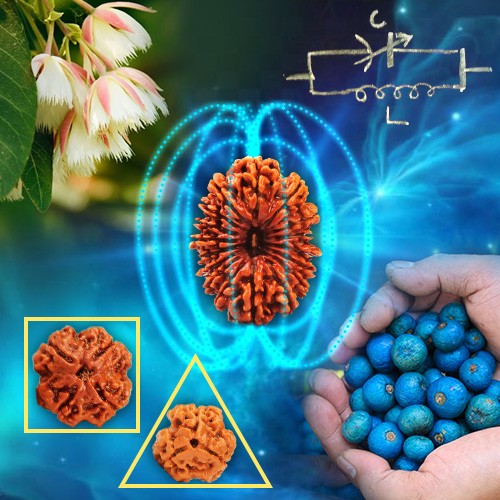
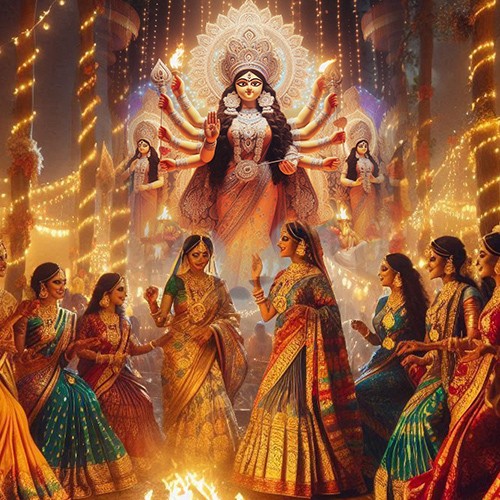


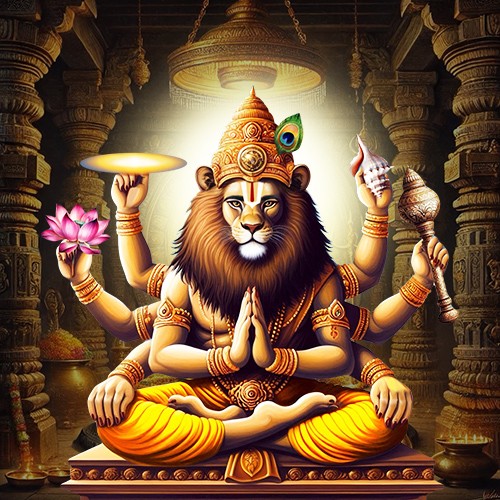

.jpg)
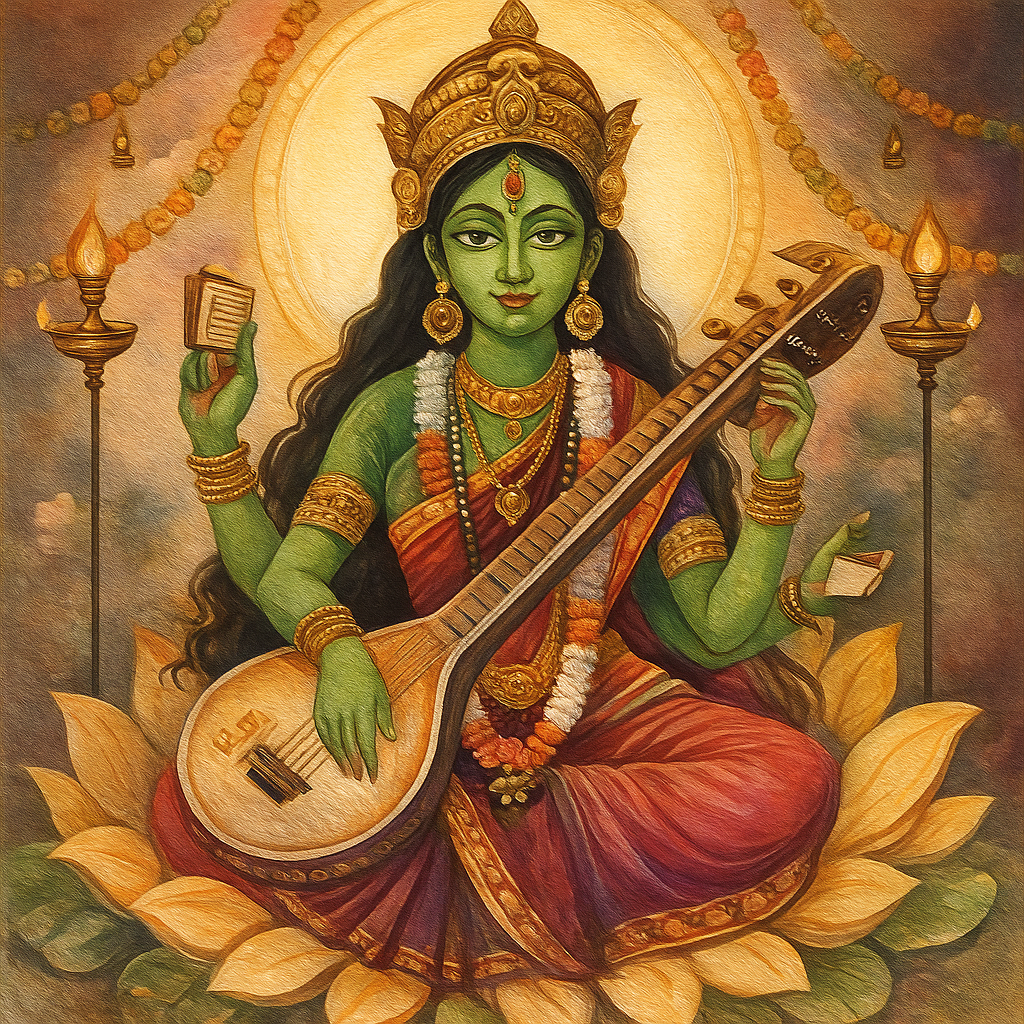
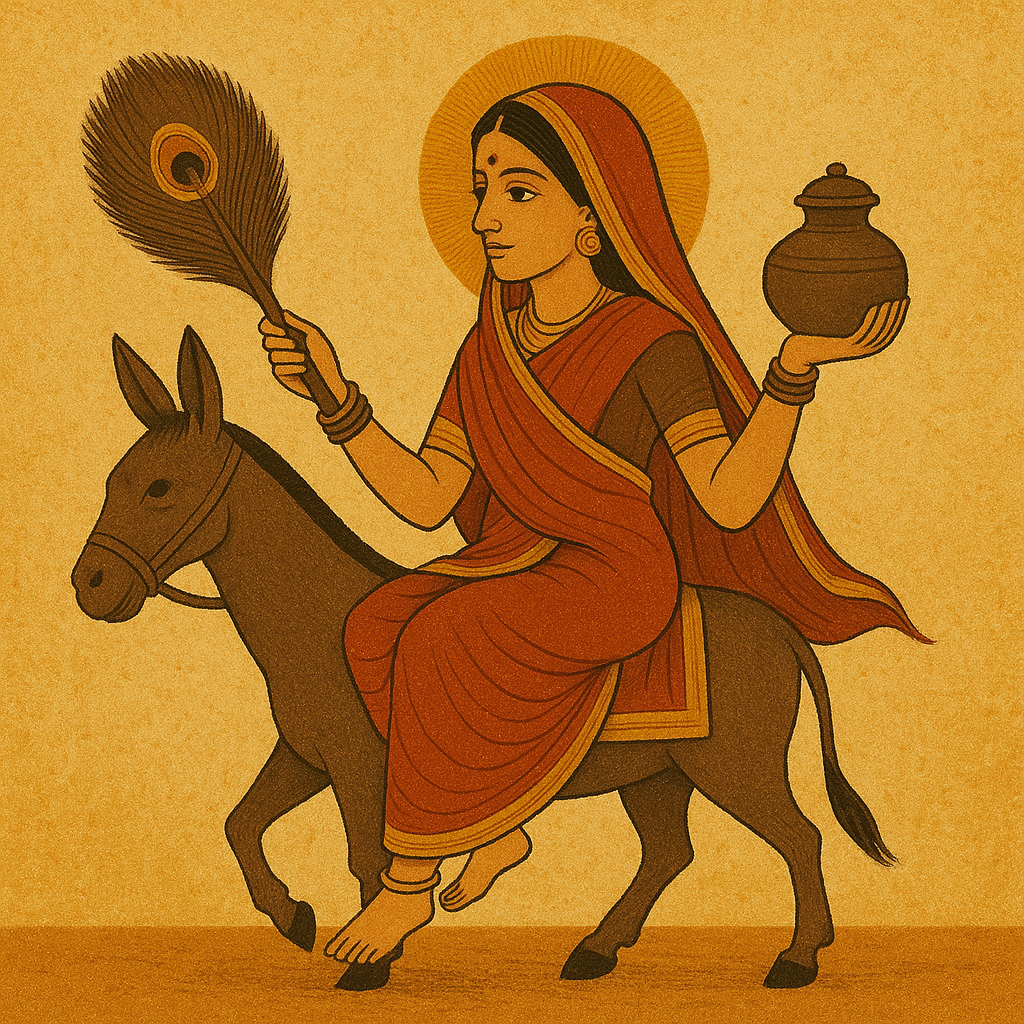
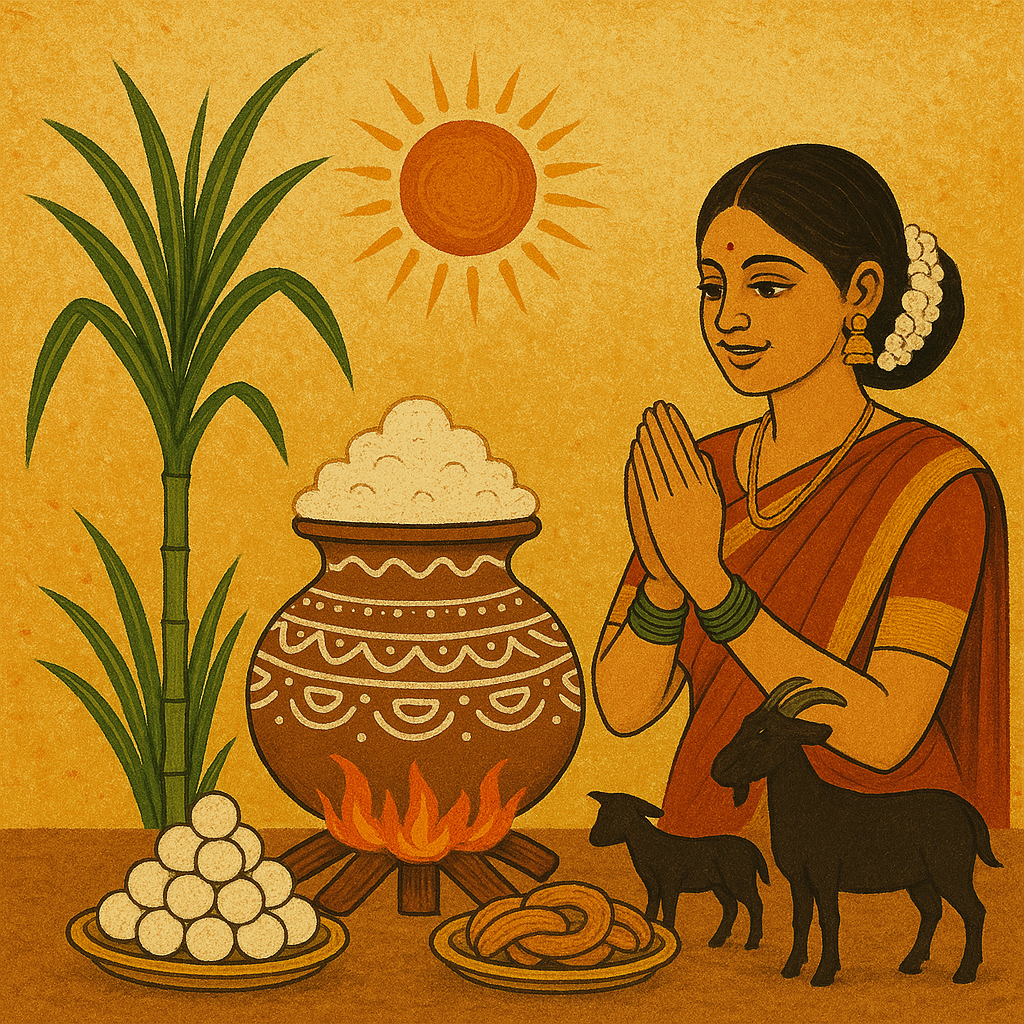
Comments 0
Leave your thought here